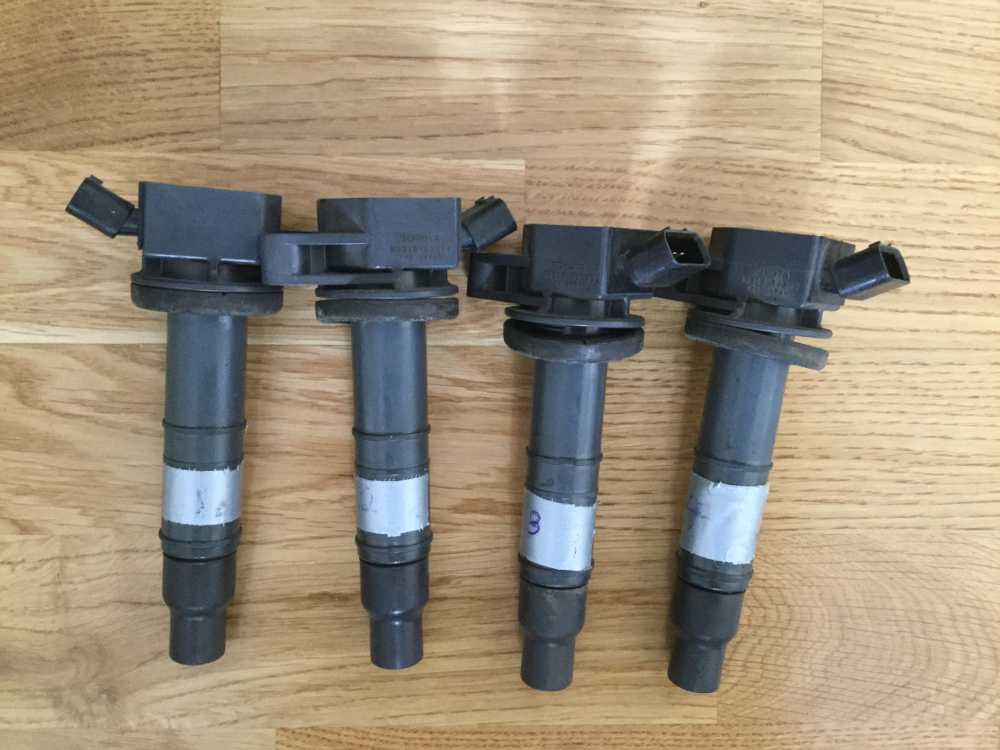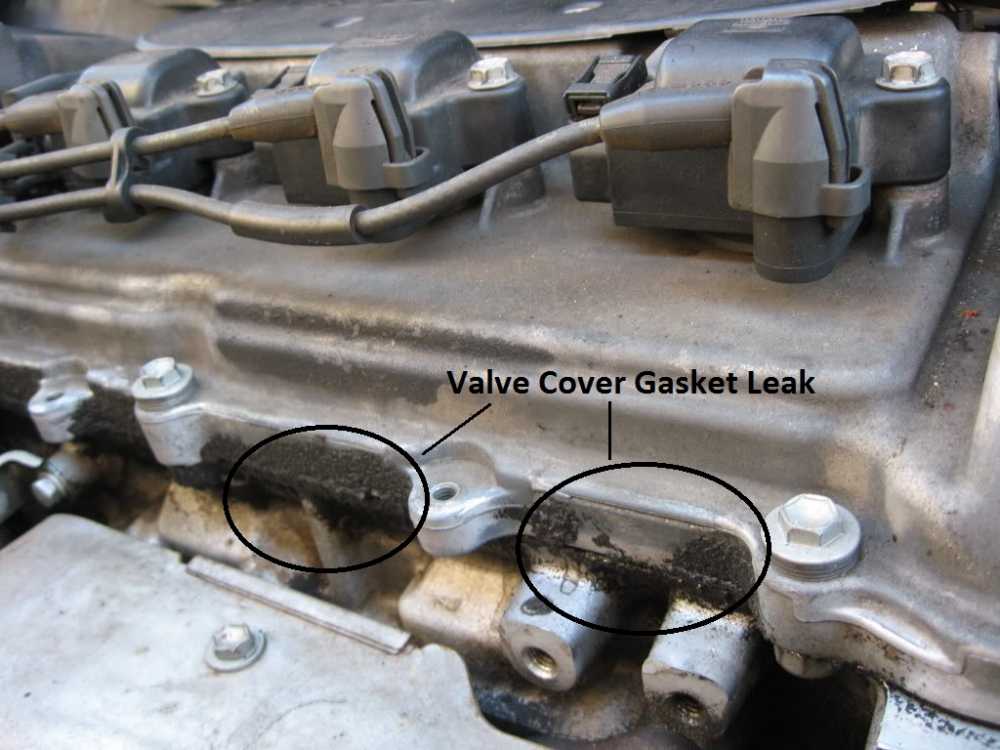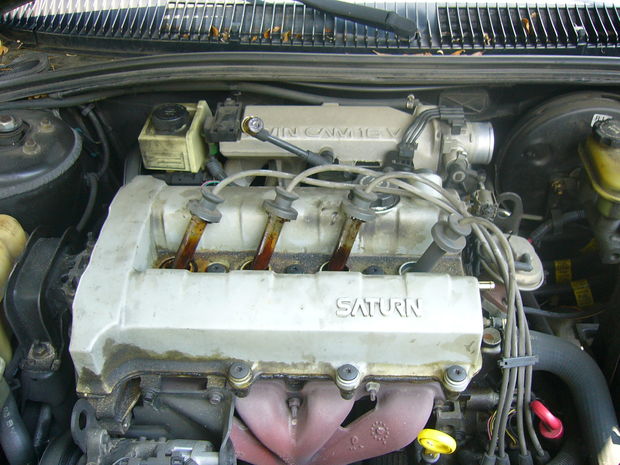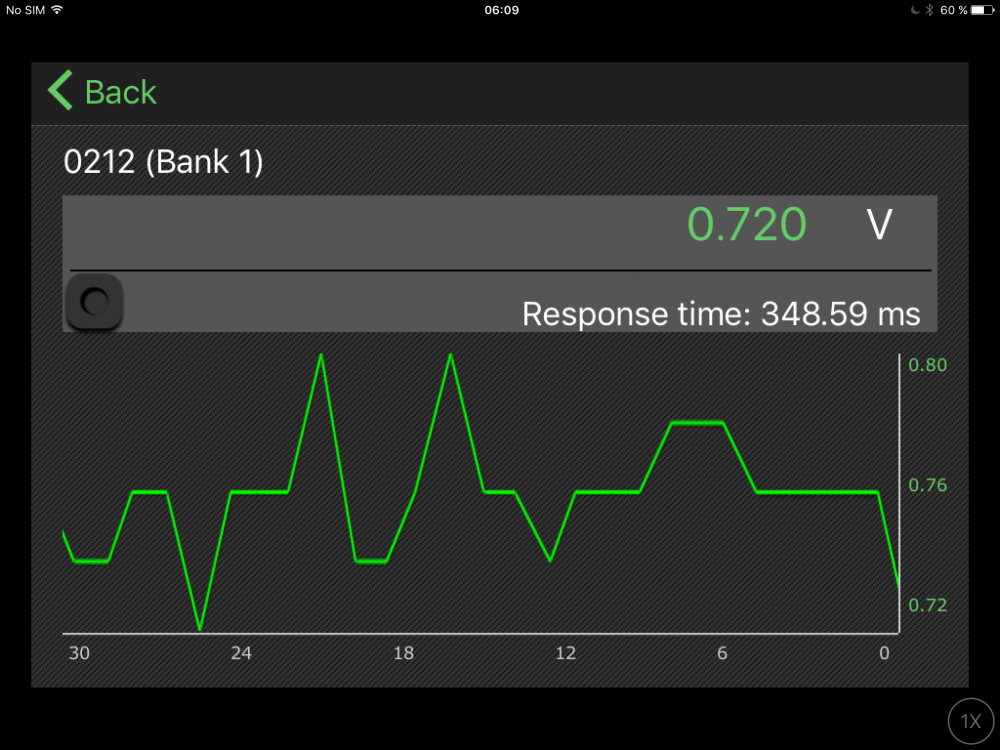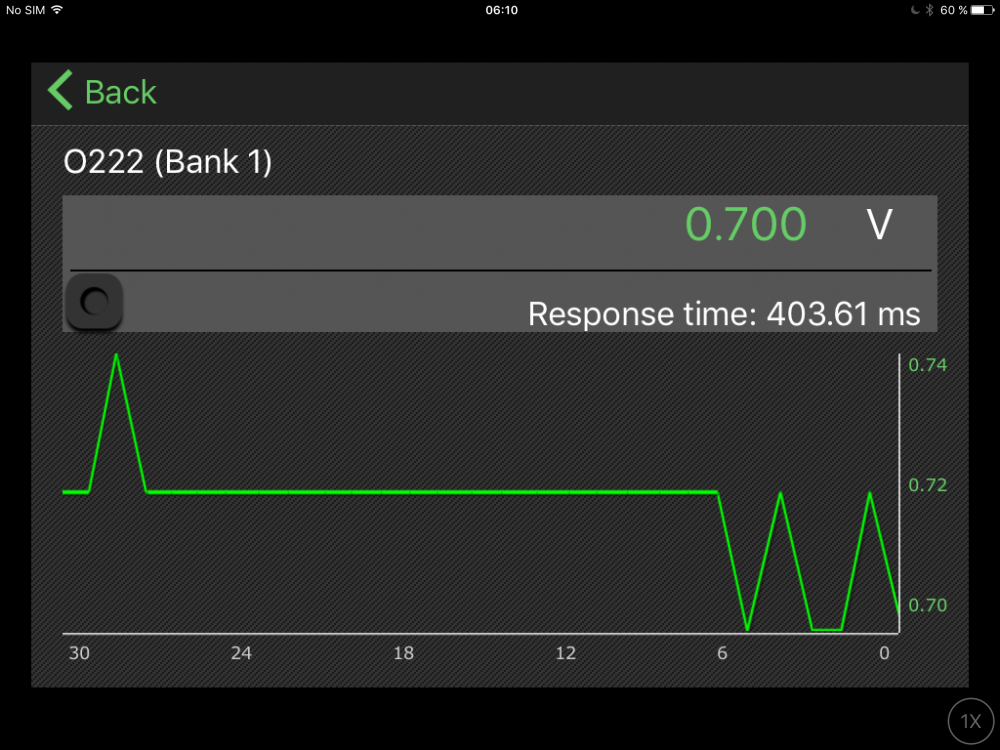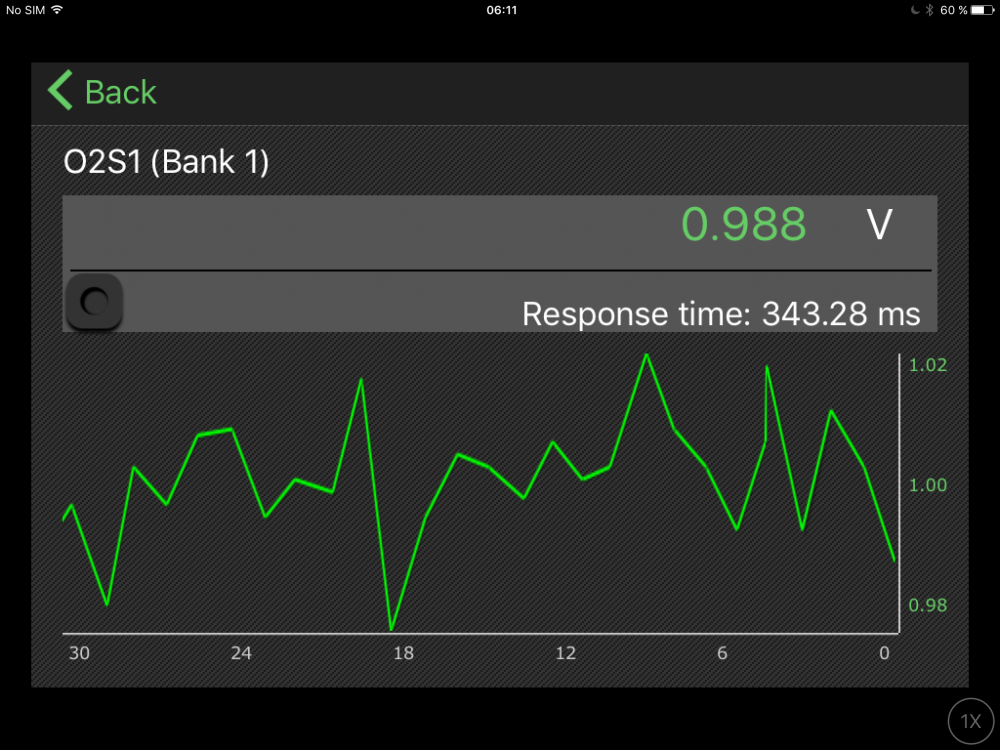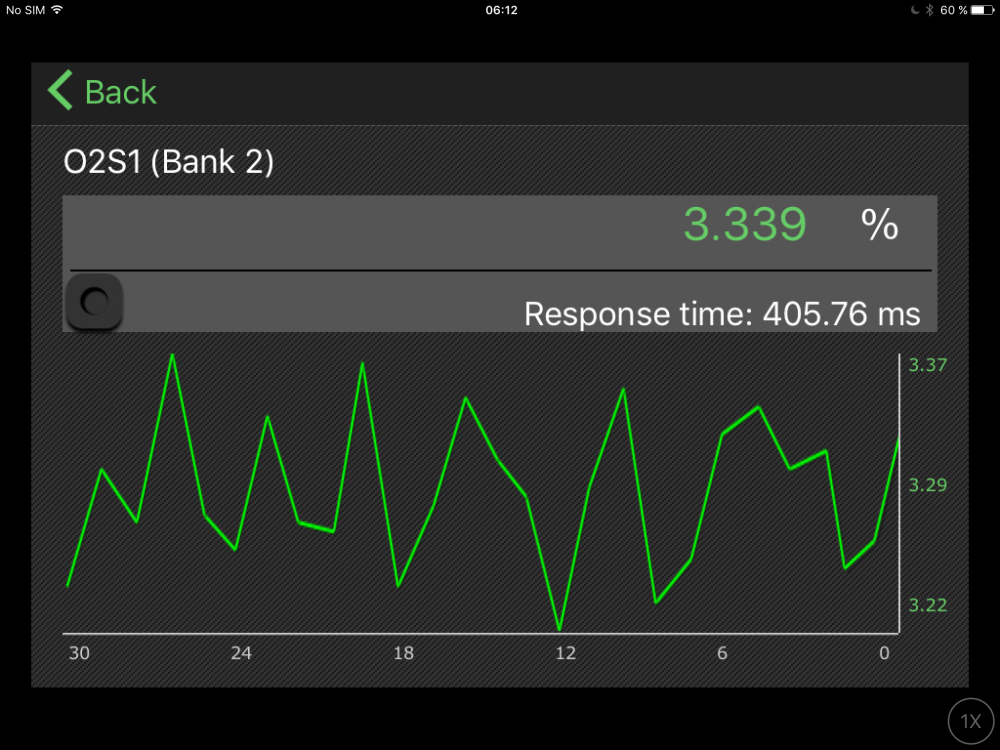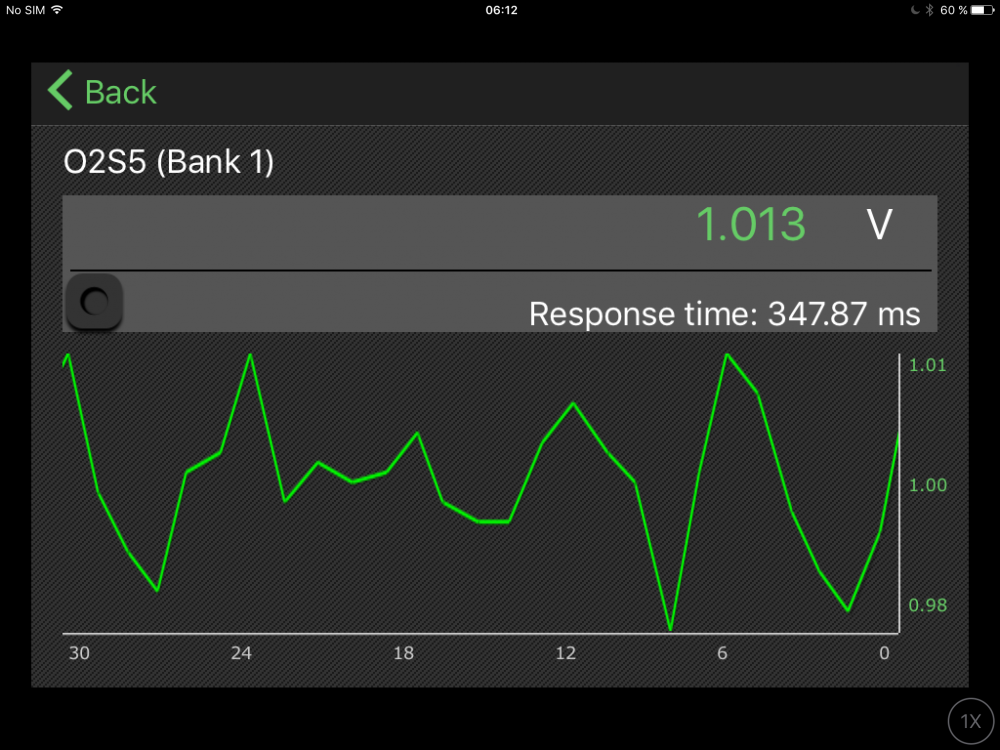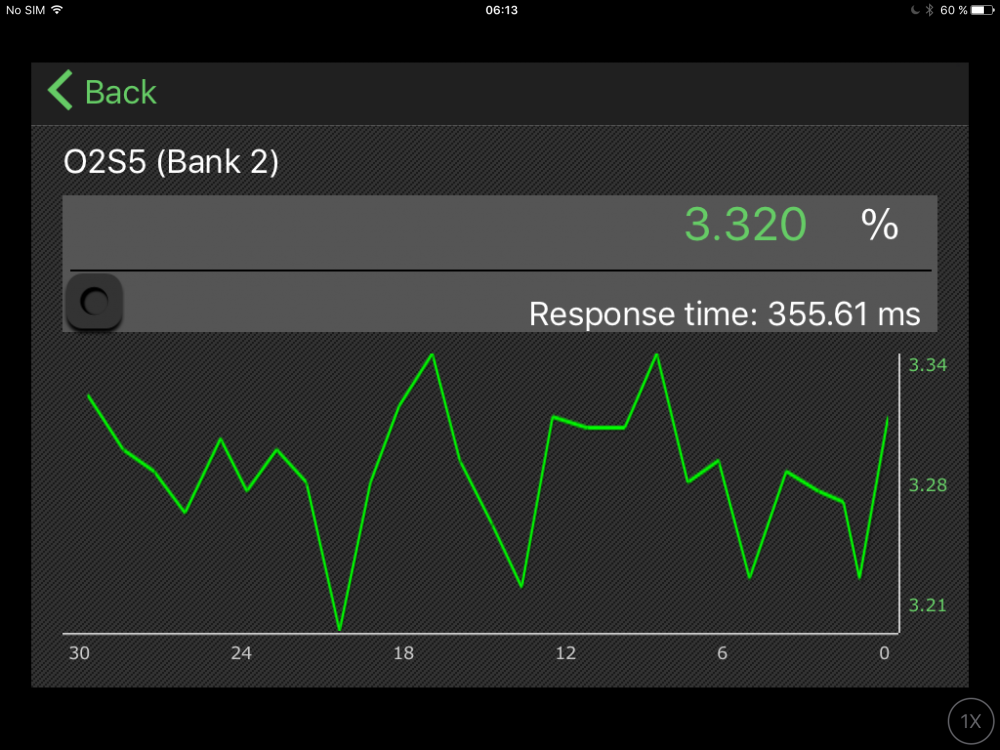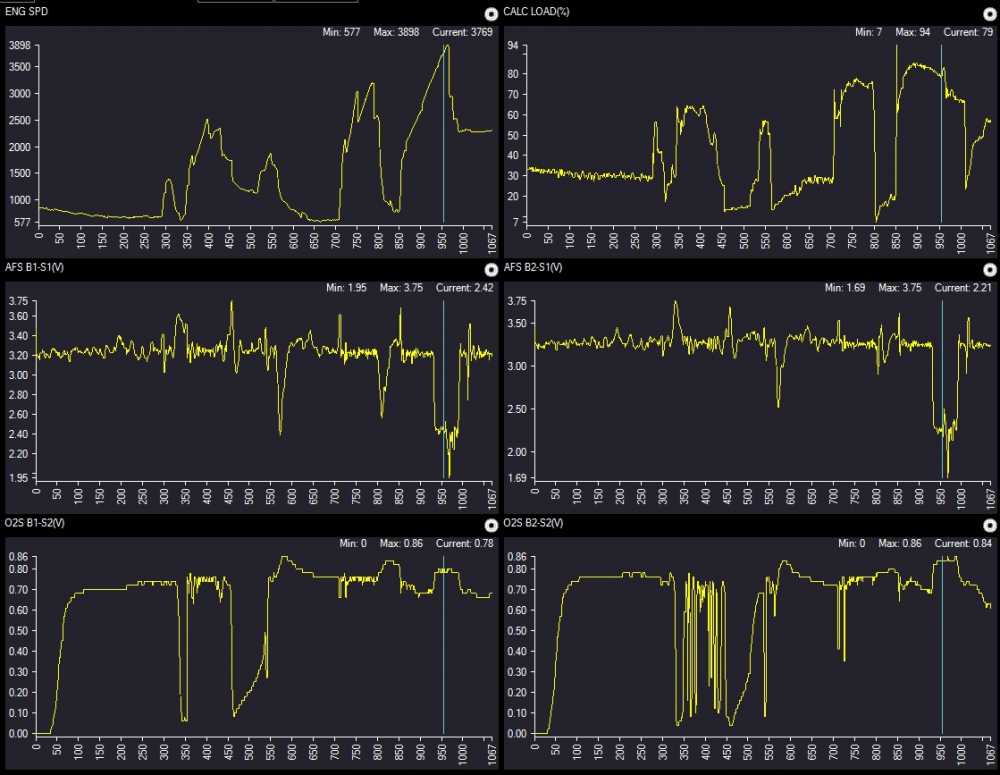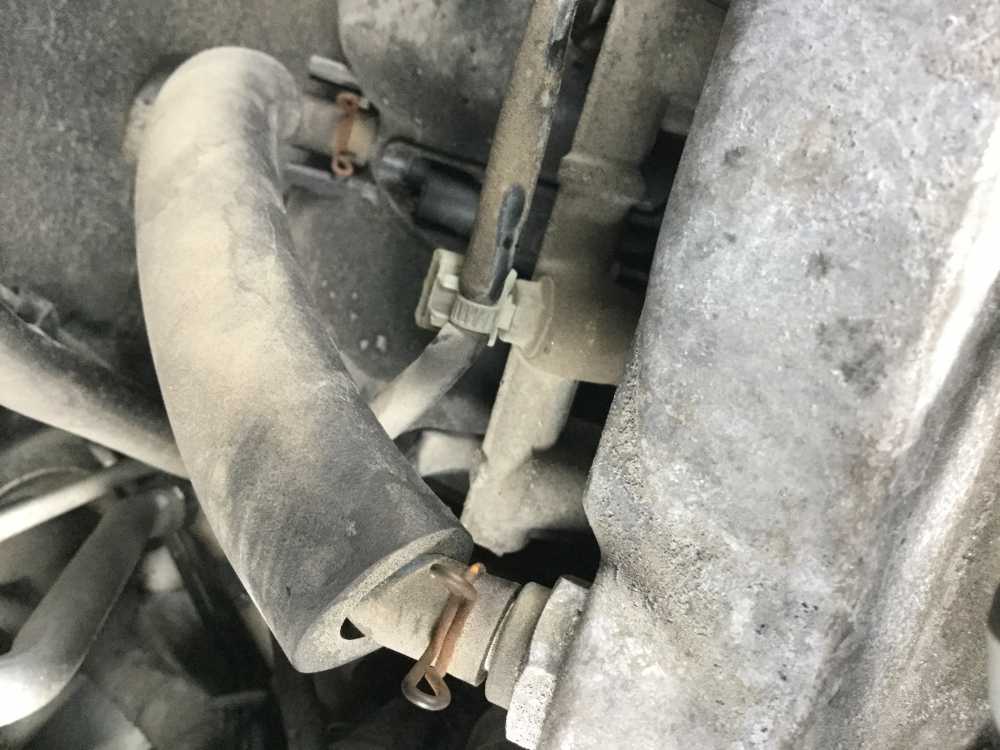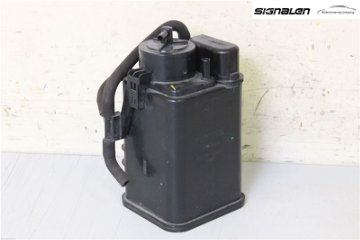Oxygen sensor wire harness test
- babajis2010
-
Topic Author
- Offline
- Premium Member
-

- Posts: 102
- Thank you received: 5
I did the spark test on the ignition coils and only thing I heard was spark or tapping sound and I couldn't see with my naked eyes any sparks on the 4 coils.
How I performed the test. I unplugged the ignition coil but still connected to the wire harness and put a spark plug in it and then I started the engine. At first I saw spark coming out on the first coil but the spark was not coming from the tip of the plug rather from the side, then other attempts no spark anywhere just the tapping of spark sound. More like you can hear but you can't see.
The ignition coil are so expensive so how do I make sure 100% the fault is from the coils and not the wire harnesses or voltage source to the coils, what other things do I need to troubleshoot for in a complete ignition system.
Please Log in or Create an account to join the conversation.
- borntoroll
-
- Offline
- Senior Member
-

- Posts: 74
- Thank you received: 9
Please Log in or Create an account to join the conversation.
babajis2010 wrote: Tyler you are awesome and thanks for your explanation.
No, you're awesome!
When I watched many YouTube videos I noticed Americans seem more informed about car fixing than the Europeans. Americans repair while Europeans just change the parts, so most mechanics here are not interested in taking time to fully diagnose a car's problems....thank goodness for the internet, at least the govt can't stop me from seeking help abroad online from good people like you guys.
Oh no no no no. :lol: :lol: :lol: I'm glad it looks that way online, but most Americans are all about changing parts! Everyone wants to turn wrenches, but no one wants to know what's actually wrong. There's so many things in the automotive industry that are built around the parts changer mentality - it's really sad.
Please Log in or Create an account to join the conversation.
- babajis2010
-
Topic Author
- Offline
- Premium Member
-

- Posts: 102
- Thank you received: 5
The first time I cleaned it I didn't realize there was a second filament inside, I was too careful because of some videos I saw of a guy cleaning it with so much care. As a matter of fact I only sprayed it with cleaner and never scrub it. Second cleaning I sprayed the other newly discovered filament inside and STFT became better.
So I have seen your YouTube video on the proper way to clean it using disc brake cleaner, and I'm positive this cleaning would bring down both STFT and LTFT.
My question is if my STFT and LTFT are in the range of +/-3, does this mean my car is healthy and I will no longer experience any drivability issues and less gasoline consumption and finally pass the almighty emission test?
What exactly should I be concerned about from the following components
MAF sensor
MAP sensor
IAC
IAT
They all seem to be controlling air.
Please Log in or Create an account to join the conversation.
- Andy.MacFadyen
-

- Offline
- Moderator
-

- Posts: 3353
- Thank you received: 1031
Tyler wrote:
babajis2010 wrote: Tyler you are awesome and thanks for your explanation.
No, you're awesome!Thanks for working with us on your running issues.
When I watched many YouTube videos I noticed Americans seem more informed about car fixing than the Europeans. Americans repair while Europeans just change the parts, so most mechanics here are not interested in taking time to fully diagnose a car's problems....thank goodness for the internet, at least the govt can't stop me from seeking help abroad online from good people like you guys.
Oh no no no no. :lol: :lol: :lol: I'm glad it looks that way online, but most Americans are all about changing parts! Everyone wants to turn wrenches, but no one wants to know what's actually wrong. There's so many things in the automotive industry that are built around the parts changer mentality - it's really sad.
I think North America was ahead for a long while for a whole pile of reasons even before emission controls the USA back in the 1960's Sun machines were more common in the US than in Europe simple because V8 ignition systems needed the equipment to get them right, after all it is quick and easy to locate a misfire or fit and gap new breaker points on a 1960's straight 4 cylinder
Then of course emission controls came in earlier in the US and OBDII arrived earlier in the US than anywhere else.
Now in Europe most petrol cars are still 4 cylinder and less tightly packaged than transverse V6's all our cars over about 1.8 litre sadly tend to be diesel (I deeply hate diesels unless they are big enough you can climb into the cylinders).
" We're trying to plug a hole in the universe, what are you doing ?. "
(Walter Bishop Fringe TV show)
Please Log in or Create an account to join the conversation.
- babajis2010
-
Topic Author
- Offline
- Premium Member
-

- Posts: 102
- Thank you received: 5
BANK 1 STFT @ IDLE (740RPM) +3.12 ---> -2.34// BANK 1 LTFT @ IDLE (740RPM) +7.03
BANK 1 STFT @ (1500RPM) +3.91 ---> -2.34// BANK 1 LTFT @ (1500RPM) -1.56
BANK 1 STFT @ (2500RPM) -3.91
> -8.59 // BANK 1 LTFT @ (2500RPM) -1.56
=================================
BANK 2 STFT @ IDLE (740RPM) +3.12
> -1.56 // BANK 2 LTFT @ IDLE (740RPM) -1.56
BANK 2 STFT @ (1500RPM) +3.12
> 0 // BANK 2 LTFT @ (1500RPM) -4.69
BANK 2 STFT @ (2500RPM) -3.91
> -9.38 // BANK 2 LTFT @ (2500RPM) -4.69
Please Log in or Create an account to join the conversation.
- borntoroll
-
- Offline
- Senior Member
-

- Posts: 74
- Thank you received: 9
Please Log in or Create an account to join the conversation.
- babajis2010
-
Topic Author
- Offline
- Premium Member
-

- Posts: 102
- Thank you received: 5
By the way my valve cover gasket is leaking oil and also I have so much sticky oil all around the engine oil cover ( the hole you pour oil into the engine). Can my engine have loss of fire power due to this also.
And also the STFT and LTFT come down to like 0.78 when my radiator fan kicks in.
Please Log in or Create an account to join the conversation.
- babajis2010
-
Topic Author
- Offline
- Premium Member
-

- Posts: 102
- Thank you received: 5
I cant see the other side where you have the manifold, it's so tight to see clearly.
Can this cause loss of engine fire power and do I really need a new valve cover gasket.
A friend that was with me when I started the engine and it's not warm asked me if this is a Diesel engine because of the sound, but I guess the car's RPM is usually high at cold start around 1600-1800RPM and that's when it sounds like a Diesel engine, but when it's warmed up it becomes normal petrol engine sound.
What could this mean
Please Log in or Create an account to join the conversation.
babajis2010 wrote: By the way my valve cover gasket is leaking oil and also I have so much sticky oil all around the engine oil cover ( the hole you pour oil into the engine). Can my engine have loss of fire power due to this also.
Negative, no loss of power due to the valve cover leaking. That kind of a PCV system leak would need to be huge to cause any kind of fuel trim issue, and it'd mostly be at idle. I mean, you should fix it.
And also the STFT and LTFT come down to like 0.78 when my radiator fan kicks in.
I think you fixed it! :woohoo: I love those trim numbers you posted earlier. Definitely not running rich the way it was.
My question is if my STFT and LTFT are in the range of +/-3, does this mean my car is healthy and I will no longer experience any drivability issues and less gasoline consumption and finally pass the almighty emission test?
I'm gonna say yes? Maybe drive it a couple more times, keep your eye on the fuel trims. If you still don't see the trim total going over 10% +/-, then I say give the emissions test another shot.
Please Log in or Create an account to join the conversation.
- babajis2010
-
Topic Author
- Offline
- Premium Member
-

- Posts: 102
- Thank you received: 5
I followed one of your YouTube videos again on checking my ignition coils and they all seem to be good.
I took off the wire harness connected to the coil and started the engine and then engine was shaky and almost went off, I did same thing for all the 4 coils and they came back the same. So I'm assuming all my coils are still intact.
I got DTCs for doing that which is normal and I just erased the codes when I was finished and they never came back.
I have driven many cycles now and my fuel trims are little better or sometimes almost the same like my previous posts on STFT and LTFT.
I will change the gasket and ask my mechanic to take the opportunity to check the conditions of my timing chain.
My next worry now are my oxygen sensors. I have watched your videos on your Versux scanner and I saw your upstream sensors are moving from 0.01v to 0.9v. I want to understand more the language this my cheap wifi OBD2 scanner is talking on my sensors. I want to see my upstream moving as yours and my downstream moving slightly also.
Help me arrange the pixs and put what sensor in each pix.
Under the section where you have NOT USED, you said those are downstream sensors that are not responsible for fuel trims so there PIDs are not displayed, so if that is the case then the other two should then be my upstream sensors and they should therefore move between 0.01v to 0,9v, but they are behaving like downstream sensors by moving between 0.72v to 0.9v (0212 bank1), and 0.7v to 0.9v (0222 bank1), and (0212 bank2 in % not used), (0222 bank2 in % not used).
The other section you have two sensors showing in voltage and two others showing in percentages.
(02S1 bank1) 0.98v to 1.02v
(02S1 bank2) 3.22% to 3.339%
(02S5 bank1) 0.98v to 1.02v
(02S5 bank2) 3.21% to 3.34%
Pixs attached
Please Log in or Create an account to join the conversation.
- babajis2010
-
Topic Author
- Offline
- Premium Member
-

- Posts: 102
- Thank you received: 5
Please Log in or Create an account to join the conversation.
babajis2010 wrote: My next worry now are my oxygen sensors. I have watched your videos on your Versux scanner and I saw your upstream sensors are moving from 0.01v to 0.9v. I want to understand more the language this my cheap wifi OBD2 scanner is talking on my sensors. I want to see my upstream moving as yours and my downstream moving slightly also.
Help me arrange the pixs and put what sensor in each pix.
Under the section where you have NOT USED, you said those are downstream sensors that are not responsible for fuel trims so there PIDs are not displayed, so if that is the case then the other two should then be my upstream sensors and they should therefore move between 0.01v to 0,9v, but they are behaving like downstream sensors by moving between 0.72v to 0.9v (0212 bank1), and 0.7v to 0.9v (0222 bank1), and (0212 bank2 in % not used), (0222 bank2 in % not used).
We can help with that! It's easy to see why you're confused about the O2 performance, this data is... weird.
For one, your upstream O2's are a wideband design, and not a conventional zirconia O2. Your sensors will never 'switch' in the way a conventional sensor will. It's signal output is usually pretty linear, unlike a conventional sensor that'll be constantly going from .1 to .9V. Check out the air/fuel ratio sensor testing thread for more info . Your upstream sensors are of the Toyota four wire design.
The other section you have two sensors showing in voltage and two others showing in percentages.
(02S1 bank1) 0.98v to 1.02v
(02S1 bank2) 3.22% to 3.339%
(02S5 bank1) 0.98v to 1.02v
(02S5 bank2) 3.21% to 3.34%
This is a little guesswork, but here goes. :silly: The O2S1 Bank 1 and O2S5 Bank 2 voltage PIDs probably aren't voltages, but actually Equivalence Ratio. It's a way of translating the upstream air/fuel ratio sensor signal into terms of lambda. 1.00 represents a stoichiometric mixture, lower indicates rich, and higher indicates lean. The fact that your readings are moving right around 1.00 is a good thing.
The percentage PIDs for both banks are also probably not percentages, but actually the same sensor signal you'd see on the manufacturer data. Toyota sensors use 3.3V to represent stoichiometric, with lower voltages representing rich, and higher representing lean. Here's a sample of data I got off another Toyota. Keep your eyes on the AFS B1S1 and AFS B2S1 PIDs.
Did that make sense? :lol: I think your scanner is throwing you for a loop by mislabeling the data PIDs. Percentages that are actually voltages, voltages that aren't voltages.
Please Log in or Create an account to join the conversation.
- babajis2010
-
Topic Author
- Offline
- Premium Member
-

- Posts: 102
- Thank you received: 5
My STFT and LTFT are still great so far, but I am still having drivability issues. I have hesitation/bouncing problem and I have a list of the things I need to check, am not sure why the car bounces although it has suspension problem on rough roads so it's hard to attribute the bouncing to engine poor performance or suspension faults. What to check for performance and hesitation issue are way too much even transmission can cause that, but I am expecting some servicing stuffs from Toyota company and will change the fuel filter and go in for the emission test. I believe the fuel filter may be in bad shape as the ac air filter in the pigeon hole was a total mess. I've changed oil and oil filter.
The most exciting part of your YouTube videos is the part when you have spent some time looking at the scan tool and then you confidently say I think we have a vacuum leak and "gbam" you hit the leak like a professional using your age long golden water check. I do really wish I could do this water check just like you, but to be 100% sure I think a smoke test would work better for me as a novice who doesn't know all the areas to apply my water...I have tried the water test and can't find any leaks. Where do I put smoke into, is it the hose that goes into the brake booster?
I want to know if fluctuations between 1800-2000RPM at cold start is normal or a sign of a vacuum leak, and when engjne is properly warmed up it goes to below 740RPM.
Also my biggest pointer is the PCV valve, how I knew this was the big fat hose after the MAF sensor going to the throttle body was sticky with oil inside that you could see clearly and I don't think any kind of oil has a business in there, which means the PCV or its hose is bad and it's not taking away the pressured oil and the pressure oil in the combustion chamber is escaping through other means like the valve cover gasket, the oil cap and the hose after the MAF, and even I noticed the threads of all the old spark plugs were oily when they were supposed to be dry and have carbon only.
The oil cap is the part that beats me the most, it was so full of oil like someone spilled oil during top up
Please Log in or Create an account to join the conversation.
- babajis2010
-
Topic Author
- Offline
- Premium Member
-

- Posts: 102
- Thank you received: 5
LTFT Bank1 at idle 724RPM
> +7.03
at 1500, 2500 RPM
> -2.34
STFT Bank1 at idle when properly warmed 724RPM
> +/-1.56 to +/-3.12
at idleWhen cold 1900RPM it's around
> +/-10
At 1500,2500 RPM
> -4.6 to +9.38
Once I take my leg of the gas pedal, after about 5-10 seconds it goes back to stabilize again at the results of idle when "properly warmed".
.........................................................................................................................................................................................................
LTFT Bank2 at idle 724RPM
> -3.91
at 1500,2500 RPM no changes
> -3.91
STFT Bank2 at idle when properly warmed 724RPM
> +/-1.56 to +3.12
at idleWhen cold 1900RPM it's around
> +/-10
At 1500,2500 RPM
> +7.81 to -10.94
Once I take my leg of the gas pedal, after about 5-10 seconds it goes back to stabilize again at the results of idle when "properly warmed".
I also observe my TPS is acting strange. Factory manual says 6-16% when fully closed and mine is 12.55.
Then factory manual says when fully opened 64-98%, I didn't know how to check my own % when fully opened so I rev the engine to about 6500RPM and my throttle position opened up to 30.7%.
Please Log in or Create an account to join the conversation.
babajis2010 wrote: I also observe my TPS is acting strange. Factory manual says 6-16% when fully closed and mine is 12.55.
Then factory manual says when fully opened 64-98%, I didn't know how to check my own % when fully opened so I rev the engine to about 6500RPM and my throttle position opened up to 30.7%.
I'd suggest doing the same test KOEO while watching your scan data. Slowly sweep the throttle all the way to WOT and see how high the percentage goes then.
I suspect you only saw 30.7% the first time because the data rate on Global OBDII is VERY slow. If you're watching the whole data list, then it's easy to miss things because the scanner data rate isn't fast enough to catch them. If your scanner is capable, you can also try restricting the number of PIDs you're looking at, which will speed up the data rate and show more detail.
The most exciting part of your YouTube videos is the part when you have spent some time looking at the scan tool and then you confidently say I think we have a vacuum leak and "gbam" you hit the leak like a professional using your age long golden water check. I do really wish I could do this water check just like you, but to be 100% sure I think a smoke test would work better for me as a novice who doesn't know all the areas to apply my water...I have tried the water test and can't find any leaks. Where do I put smoke into, is it the hose that goes into the brake booster?
The brake booster hose is good, or just about anything that goes to the intake manifold.
Please Log in or Create an account to join the conversation.
- babajis2010
-
Topic Author
- Offline
- Premium Member
-

- Posts: 102
- Thank you received: 5
Fully close (FSM 0.2-5.7 kohms) first time I got 2.13 and another time after I did the test WOT and then closed the valve the reading changed from 2.13 to 2.18
Fully open (FSM 2.0-10.2kohms) this is the part I know the TPS is bad, this resistance test and the TPS behavior is almost the same thing as a voltage test behavior. As I was opening the valve gradually, the TPS kohms was not reading until the valve was around 30-40% opening and at final WOT it reads 2.53 Kohms, and the reading was not sequential incrementally even though i opened the valve gradually.
As I was closing the valve the TPS behaved the same way as when I was opening the valve, it's kohms reading stopped at 2.18 when the valve was around 30-40% to closing end, and this reading is also different from the reading I got when I did the test at close valve or idle state.
Looking at the TPS resistance behavior I now understand why I am having problems moving from a stop position, the ECU is not telling the system to supply fuel as it thinks the throttle valve is closed when In fact it's opened, so fuel is not been injected at 30-40% opening of the throttle valve.......it's a sluggish movement from gear 1,2 especially at any starting point or traffic light stops. And also the TPS has many sweeping readings... I mean the reading jumps around and it's not steady.
I can see that the mechanical part of the TPS is the problem, Toyota designed it with a plastic and spring inside and it's been spinned around by a strong iron rod coming from the throttle body, so over the years the plastic and spring become weak and lose the spinning strength.
Please Log in or Create an account to join the conversation.
- babajis2010
-
Topic Author
- Offline
- Premium Member
-

- Posts: 102
- Thank you received: 5
The hose is coming from the engine valve cover to the manifold, if I remove the hose from the valve cover end and put smoke in it that should work I guess.
Please Log in or Create an account to join the conversation.
- babajis2010
-
Topic Author
- Offline
- Premium Member
-

- Posts: 102
- Thank you received: 5
I want to also clean my EGR valve but I can't locate it in the engine bay, any help would be appreciated.
The picture I am trying to upload is not working but I just found out it's the charcoal canister.
Btw just saw your daughter in one of your YouTube videos, may God bless your wonderful family. You and many auto repair technicians on YouTube are helping people all over the world.
Please Log in or Create an account to join the conversation.
- babajis2010
-
Topic Author
- Offline
- Premium Member
-

- Posts: 102
- Thank you received: 5
My car is not moving as it should for a 2.0L engine and it jerks, and after I changed my CAT and drove on the highway I got P0420 and P0430, and I suspect it's unburnt fuel in the combustion chamber that has got into the CAT, so I deleted the codes like 2 times and it has not returned since.
One thing I noticed though I unbolted my throttle cable from the throttle body because I wanted to check if it retracts as I saw on YouTube, but my mechanic and Toyota guys said it doesn't retract on its own, retraction is done by the lever on the throttle body. So I asked my mechanic to put back the cable for me and immediately after that surprisingly the car was moving so smart and fast as it should but still jerking, then I bought injector cleaner and put in the gas tank and the jerking went away like 60-70% within 30mins or so, and some days later like 90-95% no jerking.
I looked at my other Toyota car and it's correct the cable is designed not to retract, but the only difference I noticed on my other Toyota is that in the drivers side gas pedal you could drag out the accelerator cable little like 2-3mm or so and when you depress the gas pedal it doesn't catch the throttle lever immediately and that car runs like a champ, very fast best gas mileage, infact the gas pedal and accelerator cable respond to perfectly to how much you depress the gas pedal. Now back to the Avensis I need help on, I don't have that kind of 2-3mm play in the acccelerator cable inside the car. I can't drag out the cable at all like I did in my old Toyota, the gas pedal when depressed has no free play, it controls the lever on the throttle body immediately, pls is this accelerator cable adjustment normal.
Now to the fuel trims. I wanted to buy fuel filter from Toyota company but they told me I don't need it, I don't understand why. I looked at my factory service manual and it only talked about fuel filter assy for a Diesel engine 1CD-FTV, please does it mean my Avensis petrol 1AZ-FE does not use fuel filter, I'm so confused because I'm suspecting my problem is fuel system since I have changed to new ignition coils as part of my comprehensive service on this car. Why did the jerking stop within minutes of applying injector cleaner if I don't have a clogged fuel filter and injector. My car idles fine, and after I changed CAT I passed emission CO 0.1 max is 0.5, HC 2 max is 100, why is my HC so low because my other car that works very fine has HC between 18-25
My fuel trims below
Cold start at idle
STFT Bank1 (1.56 to 7.81)
STFT Bank 2 (2.34 to 6.25)
LTFT Bank 1 (-0.78)
LTFT Bank 2 (-1.56)
Warmed engine at idle
STFT Bank 1 (-0.78 to +1.56)
STFT Bank 2 (-0.78 to +1.56)
LTFT Bank 1 (+0.78)
LTFT Bank 2 (-1.56)
Warmed engine at 3500RPM
STFT Bank 1 (-3.91 to -8.59)
STFT Bank 2 (-4.69 to -8.59)
LTFT Bank 1 (-1.56)
LTFT Bank 2 (-3.12)
Please your help is needed my car is not responding well in movement compared to how much I depress my gas pedal. Can a professional scan tool identify the problem with my car considering my fuel trims are not looking all that bad except the increase in STFT at 3500RPM and it consumes fuel. It looks like I will be losing around 100km - 200km for every 60L full tank. Is my STFT negative 8.59 lean or rich condition. My spark plug electrode is spotless white after almost 2000km driven
Please Log in or Create an account to join the conversation.

